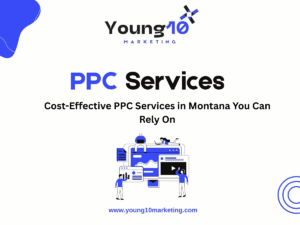Discover the difference between local and organic SEO—learn affordable, top-rated, and experienced strategies, plus premier tips with examples and infographics.
Search engine optimization (SEO) is essential for businesses, but knowing whether to focus on local or organic SEO can be confusing. In this guide, we’ll explain what is the difference between local and organic SEO and share affordable, top-rated, and experienced strategies, plus premier tips to help you reach the right customers effectively.
At a high level:
Organic SEO targets a broader audience with content optimization to rank in national or global search results.
Local SEO focuses on visibility within a specific geographic area—ensuring your business appears in local searches like “near me” or city-based queries.
Affordable What Is the Difference Between Local and Organic SEO
Local SEO on a Budget
Google My Business (GMB): Free, essential tool.
Local Keywords: e.g., “best bakery in Austin.”
Local Citations: Listings in directories like Yelp and Yellow Pages.
Reviews: Encourage happy customers to leave reviews—free social proof.
Organic SEO Without Breaking the Bank
On-Page SEO: Use tools like Yoast or RankMath to optimize content.
Content Marketing: Write evergreen blogs, shareable and informative.
Technical Fixes: Improve site speed with free plugins or Google PageSpeed.
Internal Linking & Sitemaps: Easy and budget-friendly adjustments.
Tip: Combining both lets even small businesses achieve effective rankings.
Top-Rated What Is the Difference Between Local and Organic SEO
Why Local SEO Outperforms
Near-me intent: Mobile users, 80% search locally.
Map Pack Feature: Appearing in the first three Google local results = higher CTR.
Immediate Intent: Users looking locally are often ready to buy.
The Power of Organic SEO
Authority Building: Long-form, high-value content helps brands establish trust.
Evergreen Traffic: Blogs and informational pages attract long-term visits.
Scalable Reach: Expand beyond your city as your content ranks globally.
Experienced What Is the Difference Between Local and Organic SEO
Local SEO Tactics for Seasoned Pros
NAP Consistency Audits: Ensure Name, Address, Phone are accurate everywhere.
Schema Markup: Use LocalBusiness schema to enhance search visibility.
Geo-Targeted Pages: Create landing pages for each location or service area.
Local Link Building: Partner with community sites or local news for backlinks.
Advanced Organic SEO Methods
Keyword Clustering: Group terms by topic for comprehensive content.
Technical SEO Audits: Conduct crawl, index, mobile-friendliness analyses.
Voice Search Optimization: Source FAQs and long-tail phrases.
E-A-T Focus: Showcase author credentials, cite reputable sources.
Premier What Is the Difference Between Local and Organic SEO
Premier Local Strategies
Local Content Marketing: Geo-specific blogs like “Best coffee shops near Elm Street.”
Hyperlocal Backlinks: Gain exposure through schools, local charities, events.
Google Posts & Q&A: Active GMB presence with weekly updates.
Premier Organic Strategies
Content Hubs & Silos: Organize content in clusters for topical authority.
Long-Form and Data-Driven Content: Use surveys, case studies, and infographics.
International & Multi-Language SEO: If you expand globally.
Examples
Local Coffee Shop
Local focus: GMB status, citation consistency, keyword standings, content structure, and backlink profile are all optimized by Young10Marketing for maximum impact.
Organic growth: Launched blog “Guide to Single-Origin Coffee” → appeared in Google search, boosting site visits by 50%.
E-commerce Store
Organic strategy: Built product guides and FAQ pages → traffic increased +120% over six months.
Local expansion: Created location pages with store hours → first-page local SERP and +30% in-store visits.
How to Choose What’s Right for Your Business
Who, Where, and Why?
If you serve walk-in customers locally, invest in local SEO first.
If you ship or operate globally, prioritize organic SEO strategies.
Many businesses need a mix: local for storefront traffic, organic for brand authority—highlighting the key difference between local and organic SEO strategies.
Implementation Guide and Tools
Audit
GMB status, citation consistency, keyword standings, content structure, backlink profile.
Optimize
GMB with photos and categories.
On-page SEO: Title tags, schema, content structure, internal links.
Content plan: local service pages and broader topics.
Monitor
Local: GMB insights, Map rankings, local traffic.
Organic: SERP rankings, organic traffic growth, domain authority (Moz metrics).
Refine
Adjust based on performance. Increase local reviews, create content for missed keyword clusters, and fix technical errors.
Conclusion
Understanding what is the difference between local and organic SEO helps you choose strategies aligned with your business goals—whether you need affordable local visibility, ROI-driven search authority, or a full-spectrum premier approach. By combining both, you can build a strong online presence that translates into real-world success.
FAQs
Can I do both local and organic SEO together?
Yes. Many businesses benefit from a dual strategy: local for proximity searches and organic for wider audience reach.
How long does SEO take to show results?
Local SEO can yield results in weeks, especially through GMB. Organic SEO typically takes 3–6 months, depending on competition.
Does local SEO replace the need for a website?
No. Your website supports your brand, captures leads, and improves credibility—even if you rank in local Pack.
Can I optimize for voice search?
Absolutely. Use conversational phrasing and long-tail keywords. Optimize for Q&A queries found in tools like AnswerThePublic.
How important are backlinks in comparison?
Backlinks are crucial for organic SEO authority. Local SEO relies more on citations and NAP consistency.
Do you need schema markup?
Yes. Adding LocalBusiness or FAQ schema helps Google display rich snippets, boosting visibility and click-through rates.




